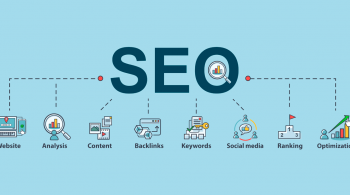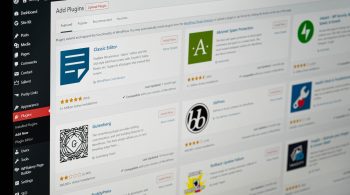In this article, we will show you how to SEO Website to the top of Google effectively with only 9 steps. This has been applied by us on many projects and received extremely positive results. So, if you are wondering how to implement an SEO strategy correctly, do not hesitate to immediately apply the following guide:
The essence of SEO Website to the top of Google
Before diving into the implementation of how SEO Website to the top of Google, you need to understand the nature and principles of its operation in finding the right content topic to improve rankings on the search page. For example, the saying of our forefathers once left “knowing people know you, you will win a hundred battles”, so it is extremely necessary to learn carefully how Google is operating and operating.
How Google Search Works
So how does Google Search work? Google uses web crawlers that regularly explore web pages to add to the index. However, not all websites appear in the search results because they are submitted manually.
Google search works in 3 basic stages:
- Crawl: Google will search for new or recently updated pages through automated crawling programs. From there store them into a large systematic list that includes the page’s URL for later review.
- Indexing: By crawling at the first stage, Google will continue to try to analyze the content on the page including text, images, videos, etc. This data information is immediately stored in the index. Google item.
- Ranking: When users query for a certain keyword, Google will analyze, rank and return the most relevant correct results for the searcher.
Principles for SEO Website to top Google
As in many of the articles that we publish on how to do SEO, they all refer to Google’s activities prioritizing user experience. Thus, the first rule to SEO website to the top is that you need to meet the search intent of the user.
 Some suggestions from Google to build a quality website
Some suggestions from Google to build a quality website
In order to provide users with the best website experience, Google has written articles to guide webmasters to do:
Specifically:
- Help Google find your content through sitemap submissions.
- Tell Google which pages you don’t want it to crawl with the robots.txt file .
- Help Google and users understand your content.
- Optimize user experience.
- Optimize Title, Meta, Image tags.
- Optimize content, publish quality content.
- Build and optimize internal links .
- Manage your site’s appearance in Google search results.
- Analyze search performance and user behavior.
Next is the content to help you have an easier to understand view of how web SEO to the top of Google.
How to SEO Website to the top of Google effectively with 9 steps
If you find it difficult to improve your website rankings, this guide promises to make you like:
Step #1: Improve Onpage SEO
Onpage SEO is one of the fastest ways to help you improve your website rankings on Google.
So how to optimize the website through the target keywords?
First, you need to make sure that your keyword is at the beginning of the title tag, and here is an example:
Google has also emphasized that terms that appear closer to the top of the title tag increase the bonus points.
Next, the generated content must be at least 1800 words. According to Backlinko’s analysis of the main Google ranking factors, the average Google first page result contains 1,447 words.
With the long experience of writing articles from many industry experts, longer content tends to rank best.
For example, the keyword we ranked #1 by Google as “what is SEO” competes with high authority sites like GTV…
That’s why we always try to make our site full of everything a user might want to know about what SEO is. In fact, the content of this article is 6,803 words.
However, it’s not always that long-form content is good for improving rankings, usually it won’t be suitable for the e-commerce industry. But if your content has the ability to create then don’t hesitate to create and publish them.
Finally, you should optimize the frequency of keyword repetition on the page to avoid keyword stuffing .
Step #2: Add LSI keywords to the page
If you do not know, adding LSI keywords is considered an extremely effective advanced SEO tactic to improve website rankings on Google.
LSI stands for the term Latent Semantic Indexing which are words and phrases that are considered to be related to the article title. And Google’s algorithm will often use LSI to determine content quality and relevance to search terms.
And here is a typical example for some LSI keywords that belong to the main keyword “cold beer”:
These LSI keywords implicitly confirm to Google that your content is actually describing the interpretive analysis of that topic. And this is the basis of mining the entire topic on a single page to help Google rank the first page on the search results.
So how do you find and use LSI keywords right on your website?
You will need an SEO tool to be able to search and mine for LSI keywords for your content topic.
The first tool is LSIGraph.
Your task is simply to put your target keyword right into the toolbar…
The tool will give you some LSI keywords for you to add to your article content page.
Note: You will need to select keywords that are really relevant to the content topic you are about to write, in order to have a better and more effective plan to optimize it.
Step #3: Follow up, stick to SEO techniques
With Google’s algorithm constantly updating, SEOs need to do their job in the most comprehensive and thorough way. In particular, technical SEO issues are more concerned than ever.
Here are three things you need to do:
- Check if the website is optimized for mobile devices .
- Test and improve page loading speed. (If you don’t already know, the average load time of a page is also a Google ranking factor .)
- Check for technical issues reported by Google through Google Search Console .
Continuously monitoring and checking these issues will help you get solutions at the earliest, thereby satisfying the user experience on the site in a better way.
Step #4: Consistently relevant content with search intent
Search intent is the most commonly used phrase in the SEO industry today. Explaining this, we can’t help but mention RankBrain , specifically Google can discover if your website is really suitable to return results for a certain keyword.
Rather, Google cares about how people interact with your website. The more people clicking on the page, the better your rankings can be.
Otherwise, your website will be downgraded by Google by a few positions.
That’s why it’s imperative that you make sure your site offers exactly what users are looking for. Or the content has to be the best compared to the rest of the competition. Only then will Google want to show your website to more users.
Step #5: Reduce Bounce Rate
Next, you need to test and improve the bounce rate for your website. Simply because Google does not like users to visit a website and leave immediately. This is considered an implicit signal to Google that people are feeling unhappy, and you may lose rankings soon after.
One of the top causes of an increase in bounce rate on your website is slow page loading speed, poor quality website content, poor user experience, using titles on one side, content on the other, not building internal links…or simply the website has technical errors…
After determining the website you encounter one of the above causes, then proceed to fix and optimize. This will help keep your bounce rate at the lowest, increase your reach to more potential customers and sell more products/services.
Step # 6: Research and build an in-depth set of keywords
Through the user’s search intent , you will determine which keywords they will use. That means your website must include all the keywords that target customers can type and find your product / service.
Researching and building an in-depth set of keywords for your own website is really time consuming. Specifically, it must really exploit the search needs of users.
Some support tools like Ahrefs , SemRush… you will need to repeat 3-5 times the process of mining each topic for your industry to discover the keywords surrounding it.
Step #7: Publish high-quality content
The way SEO web to the top of Google requires you to continuously publish high-quality content, this is always true in all cases, but not everyone has enough resources to deploy.
So what does high-quality content mean?
A piece of content is considered high quality when people like it and share it on social media platforms…or want to link to it. And the Google algorithm largely relies on backlinks to rank your website. Strictly speaking, the more quality backlinks your website has, the higher your website rankings will be.
One of the ways for you to build quality backlinks to your website is to publish valuable data source content that other people can cite right on their website.
For example: Most websites today use data containing a specific number to demonstrate a certain problem or event.
The second way, you need to focus on creating and building long-form content (mentioned in step 1). And here is Backlinko’s proof that longer content also gets better links.
Ultimately, you should aim to publish with more visual content formats including:
- Images, videos, infographics
- Map
- Chart
With these visual formats is a great opportunity for you to get new links.
Step #8: Build backlinks for the site
Besides publishing great content, you’ll need to find ways to reach out to more users to increase your chances of getting links from people. Because your content, no matter how good, does not have the ability to reach readers, as well as having to compete with millions of posts on the website every day, finding backlinks is not easy.
According to a data analysis report from WordPress , 70 million new posts appear every month.
As such, in order for people to link to your site, you will need to spend your time and money actively promoting the content on the page. Along with that you can combine 7 effective link building strategies mentioned in this article of ours.
Consists of:
- Guest Post
- Infographic
- Using Social
- Check your competitors’ backlinks
- Take advantage of broken links
- Put backlinks on reputable newspaper sites
- Build pillar content
Step #9: Monitor, measure, and evaluate results
After completing the above steps, your website will definitely rank higher on Google than before. But to know if your rankings have improved over time, you need to use a rank checker tool , one of which is Ahrefs.
Or simplify the problem you can monitor and measure data through Google Search Console. Here you will know exactly how many people have clicked on your website over time.
In addition, you can also compare your business results whether there is a significant improvement, specifically how much potential customers increase and how many products/services are sold. To exploit this data source, you will use the goals feature in Google Analytics .
For example, if your goal is to get more email signups, you need to see which pages are generating the most email subscribers via Google Analytics.
After tracking and measuring the data that you have collected, aggregate them to evaluate and conduct an SEO Audit of the entire article page that you have done before. You can also read more 21 Steps SEO Audit to understand more about how to make and optimize your website more effectively.
Conclusion
Above is the entire content focused on sharing instructions on how to SEO your website to the top of Google effectively. With this article, hopefully you will have a detailed overview of how to implement SEO right on your own project. If you have any questions or concerns regarding this topic, leave a comment right below, we will try to respond as soon as possible. Thank you for reading the post!







